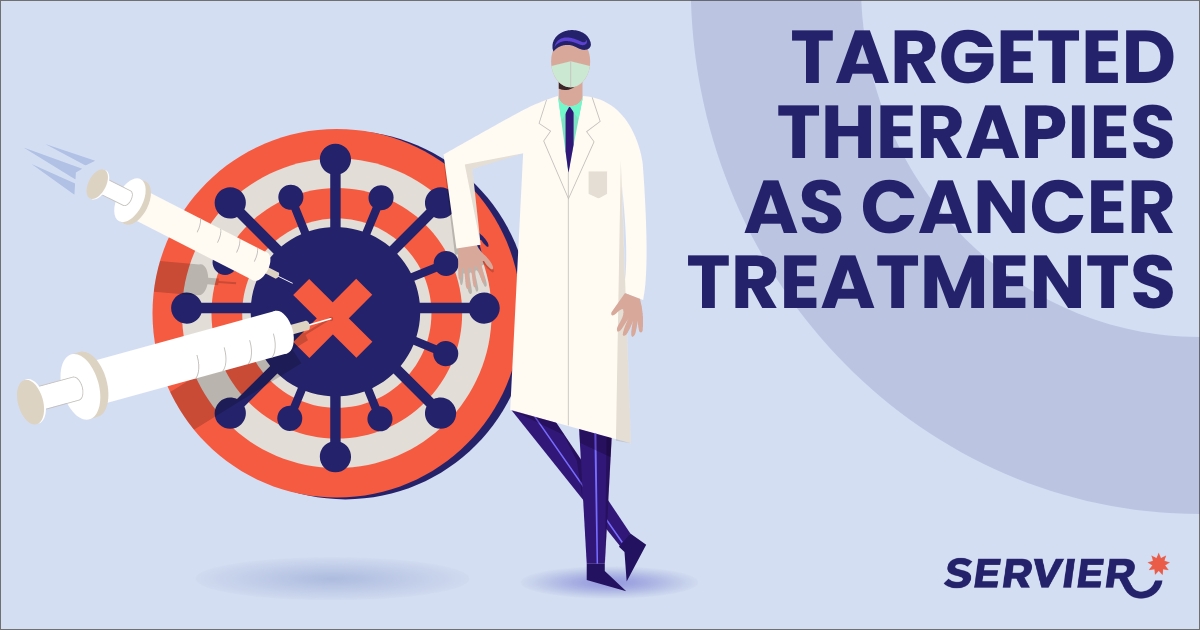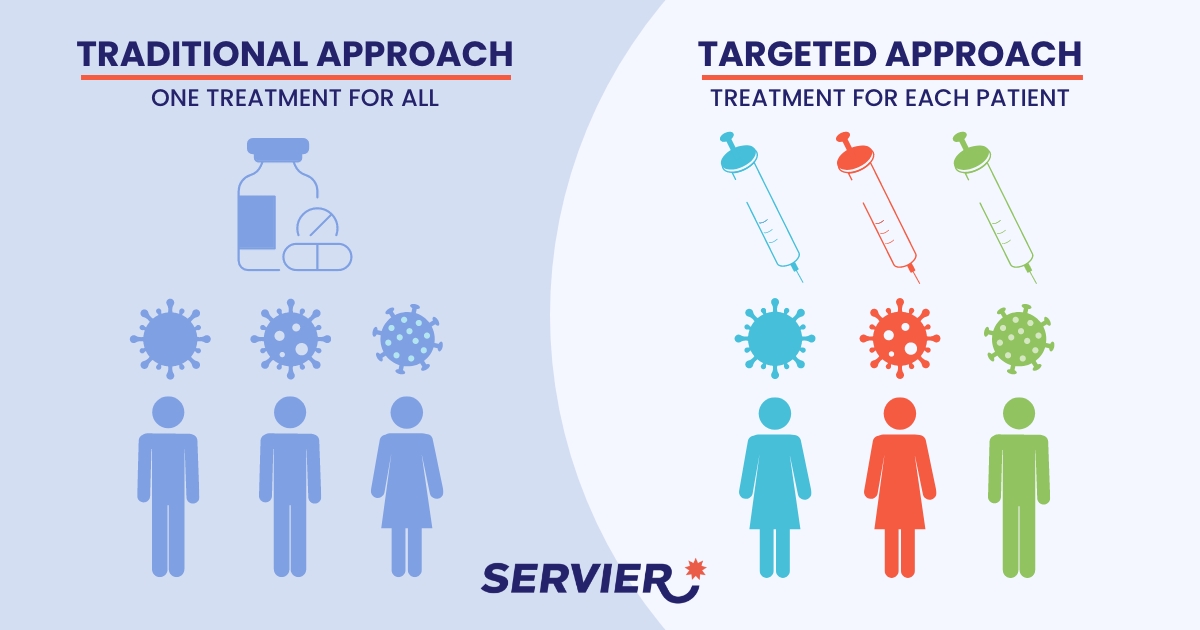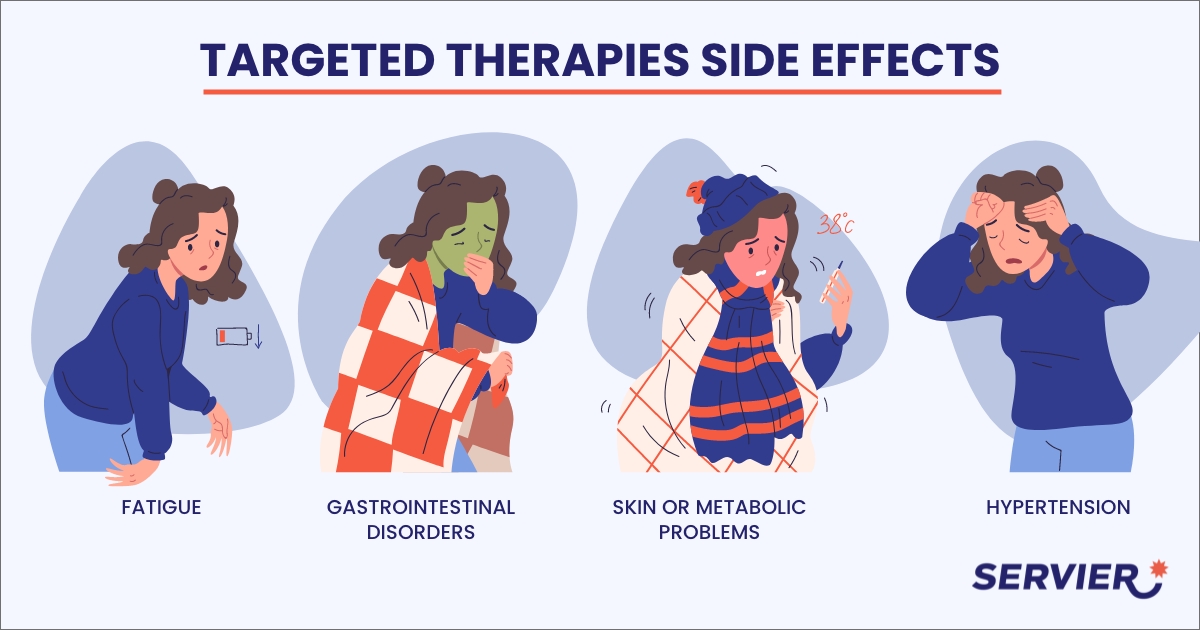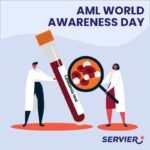
Targeted therapies: at the heart of precision medicine
Targeted therapies and immunotherapy are part of precision medicine, an exciting new advance in oncology. Based on enhanced knowledge of the biological mechanisms that trigger tumour development, precision medicine offers each cancer patient personalized treatment, adapted to the specific abnormalities of their tumour.
Precision medicine is based on molecular genetic testing, which can pinpoint and treat each patient as accurately as possible. Now, oncologists have the advanced insight to prescribe the right treatments to the right patient at the right time.
What is targeted therapy?
Targeted therapies attack cancer cells by detecting an abnormality, then acting on the mechanisms that allow tumour cells to proliferate, slowing disease progression and even shrinking the tumour.
According to the Canadian Cancer Society, two in five Canadians are expected to be diagnosed with cancer in their lifetime, and approximately one in four Canadians is expected to die of the disease1. Targeted therapies, developed early this century, have the potential to shift those numbers.
New ways to fight cancer cells
Each type of cancer has specific molecular mechanisms. As cancer researchers continue to discover new molecular mechanisms—either within cancer cells themselves or in the cells of the tumour microenvironment—they continue to understand how they support tumour growth and/or replication. Based on these discoveries, researchers have developed new types of targeted therapies to effectively treat more forms of cancer.
Targeted therapies depend on specific disease characteristics:
- Some therapies act directly on cancer cells to block a specific tumour process
via “inhibitor” molecules. These tiny molecules can interrupt signals and block
the mechanisms that stimulate rampant cell division and proliferation.
- Monoclonal antibodies act on targets in the cancer cell environment or on their surface. These large molecules deprive cancer cells of the elements they need to develop or selectively activate the natural cell destruction process on the cancer cell. They can also limit or prevent blood vessel development that feeds the tumour to interfere with its growth.
Targeted therapies give doctors more treatment options: they can be combined with conventional treatments (surgery, radiotherapy, chemotherapy) to destroy sick cells and cause the tumour to regress. Or they can be combined with hormone therapy to treat hormone-dependent cancers, such as some breast cancers.

Which patients can benefit from targeted therapies?
A patient can benefit from this revolutionary therapy after a series of tests pinpoint a target.
DNA alteration (mutations, translocations, amplifications, deletions/insertions) causes a normal cell to transform into a cancer cell. Since no two patients or cancers are exactly alike, targeted therapy is based on the molecular characteristics of tumour cells, rather than on the location
of the tumour. That means that the same type of cancer may be treated differently for each patient and the same targeted therapy drug may be prescribed for very different types of cancer with the same molecular profile.
Conducting a set of molecular tests is critical to determining whether to prescribe a targeted therapy or not. These tests analyze cancer cell DNA, collected from a tumour biopsy or blood sample, which is screened for genetic abnormalities to determine whether a targeted therapy will work.
The target may be the genetic abnormality itself or the molecular mechanism the genetic abnormality triggers.
Targeted therapies: Course of treatment
After rigorous testing, targeted therapies are personalized according to the disease’s molecular characteristics and how they work.
Small inhibitor molecules, usually administered orally, act directly on cancer cells while larger monoclonal antibodies, administered via an intravenous or subcutaneous injection, act on the cancer cell environment or on its surface.

A targeted therapy can be administered alone (monotherapy) or with other cancer treatments (surgery, radiotherapy, chemotherapy, hormone therapy).
Tolerance to targeted therapies
Targeted therapies work differently from conventional chemotherapy, which destroys all rapidly dividing cells in the body (normal cells as well as cancer cells). Chemotherapy often causes serious side effects, such as nausea, vomiting, diarrhea, fever, fatigue and hair loss.
Instead, targeted therapies attack cells with a specific molecular abnormality and spare healthy cells. Although they’re usually better tolerated than conventional therapies, they can still have side effects such as fatigue, gastrointestinal disorders (vomiting, diarrhea), skin or metabolic problems and hypertension.

Therapies that inspire hope
Targeted therapies are becoming part of the standard-of-care treatment for certain cancers.

The future looks bright indeed. Research advances, a better understanding of the mechanisms that trigger cancer cell growth, a better ability to identify new therapeutic targets and developing new targeted therapies improves every day.
And all these advances inspire hope for cancer patients and their loved ones.
1. Canadian Cancer Society, https://cdn.cancer.ca/-/media/files/research/cancer-statistics/2023-statistics/2023_PDF_EN.pdf, extracted on March 17th, 2025
2. French National Cancer Institute, 2022, extracted on March 17th, 2025



